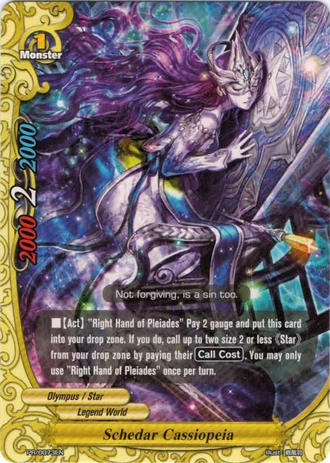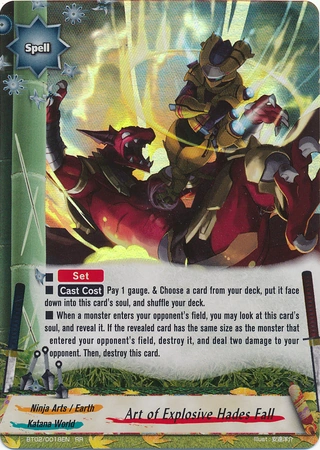In the previous article I explain how activating a spell and a skill worked and what was their differences. If you haven't read it yet, you can find it here.
To recap :
-Spell : Declare the spell, pay the cost, target. Counter timing for the opponent. Resolve.
-Skill (from a monster/item/set spells...) : Declare the skill, target and select the ressources for the condition. Counter timing for the opponent. Pay the condition and resolve the skill.
Now let's see how it works when you pay the condition of the skill. This rule is very important in the game because it creates a lot of very interesting situations that don't happen in other card games.
 You already know that condition of a skill is met at resolution. But do you know that if a skill is optional ("you may") you actually decide to meet (pay) the condition of the skill during the resolution. Yes that's right, you can call Demon Lord, Asmodai, activate the skill, target an opponent monster and, during resolution, once your opponent decided if he wants to counter, you choose if you truly want to discard the card. If you don't, the skill fail and nothing happen.
You already know that condition of a skill is met at resolution. But do you know that if a skill is optional ("you may") you actually decide to meet (pay) the condition of the skill during the resolution. Yes that's right, you can call Demon Lord, Asmodai, activate the skill, target an opponent monster and, during resolution, once your opponent decided if he wants to counter, you choose if you truly want to discard the card. If you don't, the skill fail and nothing happen. If the skill is mandatory, you have to pay the condition if you declared the skill. If you cannot fully pay the price, you will still have to pay as much as possible but the skill will fizzle since you didn't fully pay the price.
If the skill is mandatory, you have to pay the condition if you declared the skill. If you cannot fully pay the price, you will still have to pay as much as possible but the skill will fizzle since you didn't fully pay the price.
Once that this is said, we can get into something more tricky : every skill that activate under a precise trigger (for instance Hades fall), mandatory or not, all activate if the timing is met. Then, if the skill is optional, you decide if you resolve it or not.
Let's say you have one Hades fall with a size 2 in the soul. If your opponent calls a size 3, Hades fall will go off, and during resolution, it will fail to resolve.
Let's say you have one Hades fall with a size 2 in the soul. If your opponent calls a size 3, Hades fall will go off, and during resolution, it will fail to resolve.
Lets get into something trickyer : let's take Boy transformation, Yamigistune who has an optional skill that can only be activated once per turn.
If a monster deals damagd for the first time and you don't tribute it, you won't be able to activate the skill for the rest of the turn.
If a monster deals damagd for the first time and you don't tribute it, you won't be able to activate the skill for the rest of the turn.
Let's break it down with what we learned to understand. The first time you dealt damage with a skull warrior, Yamigistune activates. This is mandatory. Whether or not you resolve it is up to you, but you have to activate it. The second time you deal damage, you already activated Yamigitsune's skill for the turn
Note : I just made on mistake in the previous article, and I did not correct it because it would be confusing. There is one card that doesn't target : Champion Wrestler Asmodai.
With what I said you should be able guess why. The amount of card aimed is determined when you discard the cards, and you discard the cards at resolution.
That's it for the ruling article. I hope I was clear. You can find additional rulings article here. And obviously the rulebook that you must read.
Until next time,
Raise your flag...
Please.
.png/revision/latest/scale-to-width-down/344?cb=20150909182219)
.png/revision/latest/scale-to-width-down/330?cb=20151208022814)
Aucun commentaire:
Enregistrer un commentaire